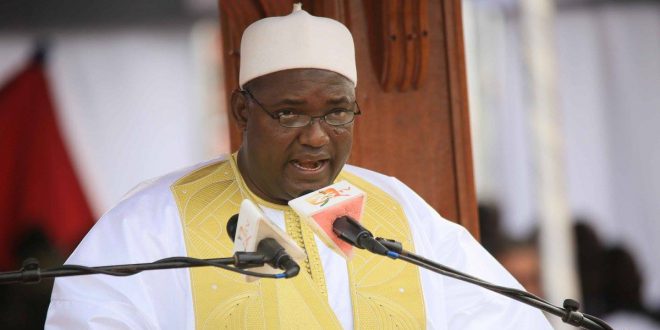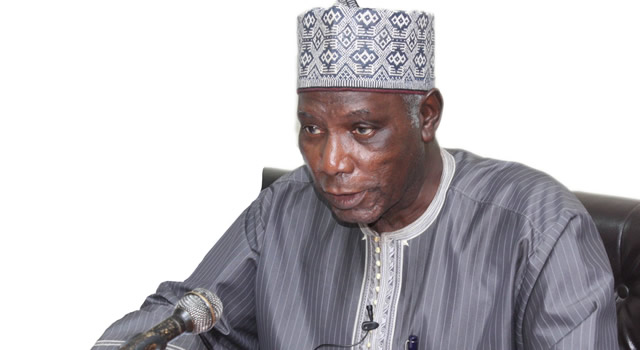President Adama Barrow disclosed that “the main challenge facing the country, in the context of climate change, is its high vulnerability to climate change and climate variability worsened by low capacity to address and adapt to the phenomenon.”
He added: “This low capacity is evident at all levels – local, regional and national. Among the major barriers are the inability to effectively predict climate change events, assess potential impacts and deliver short-term alerts, or longer-term warnings that can contribute to adaptive responses and development planning.”
President Barrow made the statement on Wednesday at the handing over of hydrological headquarters constructed by the Climate Change Early Warning Phase II project in Bansang, Central River Region
With The Gambia being particularly vulnerable to the increasing frequency and severity of droughts, floods, wind storms and other climate events, the purpose of the Early Warnings Phase II project is to form a fully operational Early Warning System in The Gambia at the institutional level, in an effort to serve local communities in remote and climate vulnerable regions.
Thus, financing from the Global Environmental Facility (GEF) and implementation support from UNDP, the Early Warning Systems in The Gambia, the Hydrological headquarters in Bansang will provide information to communities, policy, decision makers, and technical experts on the nations water resources situation so as to better sustain and manage the nations water resources.
The President went on that the capacity for climate monitoring and collection of reliable data and information on climate change and the development of alerts and early warnings was low because of a number of infrastructural constraints and human capacity limitations.
He lamented that inadequate numbers and quality of equipment, tools and data processing hardware and software to collect and analyses climate information was low.
“Shortage of qualified personnel that can analyses data and transform processed information into weather advisories and early warnings. Limited capacity at the local level for uptake of climate-related messaging and ability to respond to advisories and warnings were low,” he said.
According to him, many of these constraints have been addressed under this project and through other government interventions, thereby strengthening the early warning system in The Gambia.
President Barrow pointed out that The Gambia is increasingly prone to wind storms, droughts, floods, rainfall variability, coastal erosion, and sea-level rise. When coupled with existing socioeconomic challenges, these impacts stunt development and increase the country’s vulnerability.
“As it is, The Gambia is a low-income country, with a high dependence on agriculture, which makes large segments of the population extremely vulnerable to erratic rainfall and other climate-induced events, “he said.
The Bansang hydrological station is supposed to be the coordinating hub for all hydrological stations in the country due to its central location but was in a severe state of disrepair both in terms of site and the equipment.
This prevented it in the past years from serving its objective for the proper and regular monitoring of the Surface Water quality and quantity in the country.
Among other its importance, he said this intervention will allow the site to better serve as the National Headquarters for all Surface and Groundwater monitoring in the Five Administrative Regions (West Coast Region, North Bank Region, Lower River Region, Central River Region and Upper River Region) of the country.
However, he noted that the overall impact is a precarious agriculture that repeatedly fails to meet household food security needs, resulting in some of the population being hungry.
“The tourism industry is a significant part of the economy, but it too is highly affected by weather-related events, beach erosion, and loss of indigenous wildlife and plants.
Given The Gambia’s reliance on climate-sensitive agriculture and natural resources, it is necessary to strengthen capacity to observe, analyse, forecast, and disseminate information to enhance early warning systems for climate resilient development.
He concluded that “this facility consequently will be used to serve as a hub for the collection of all hydrological data necessary for analysis and planning, and dissemination of such information to all key stakeholders.”




